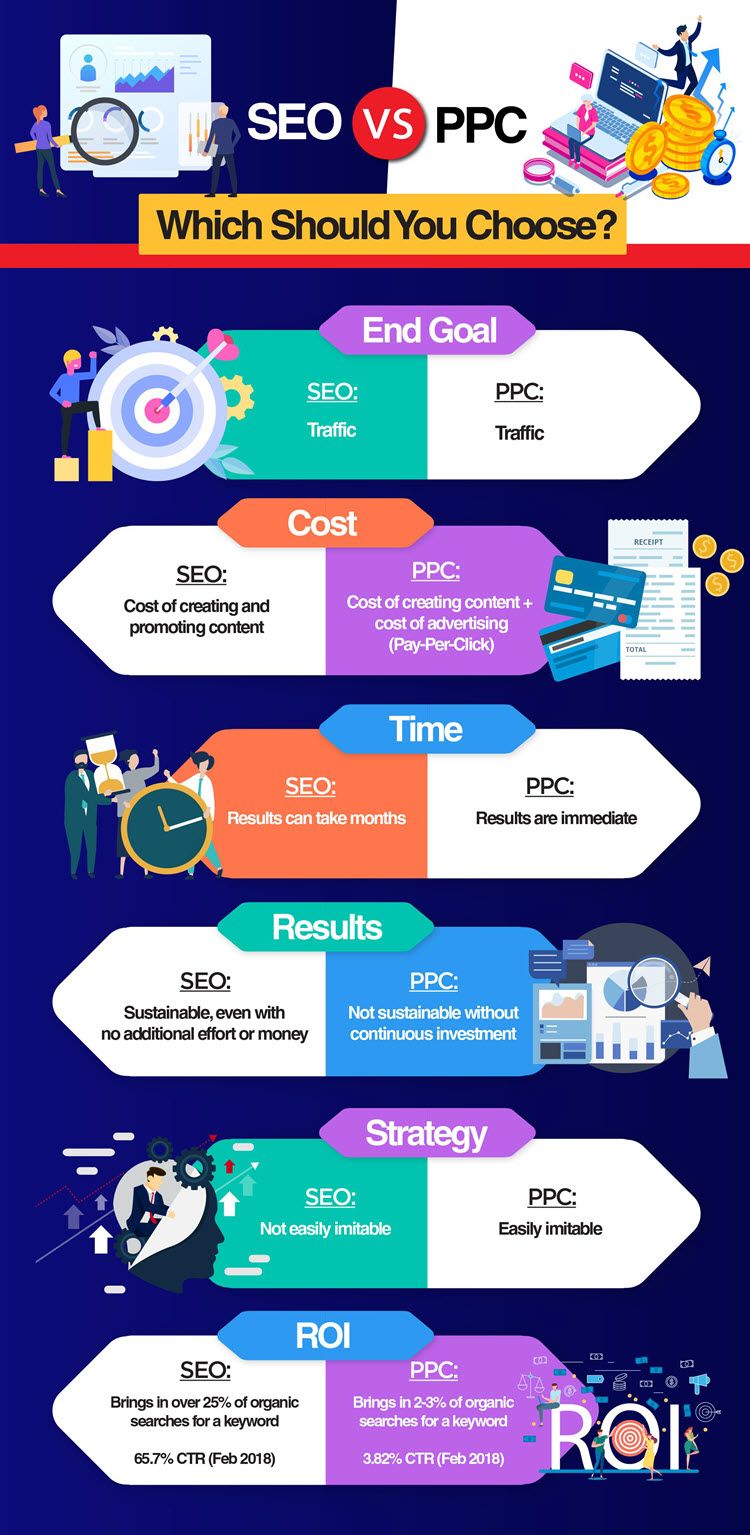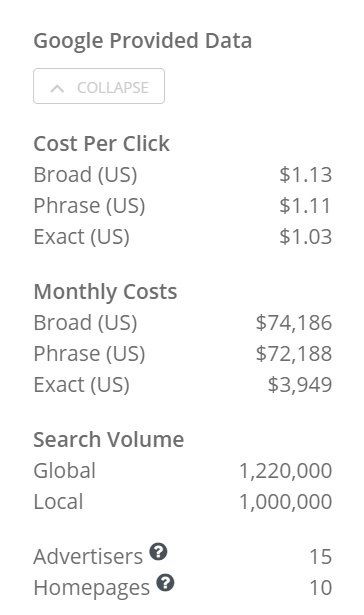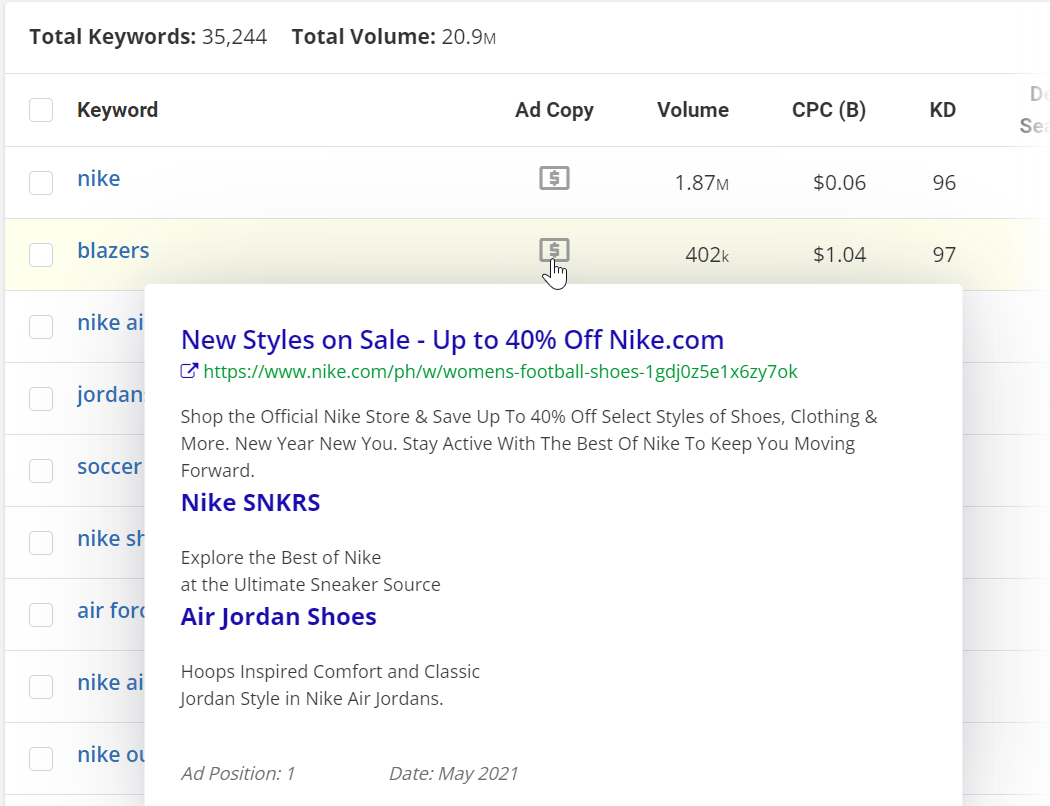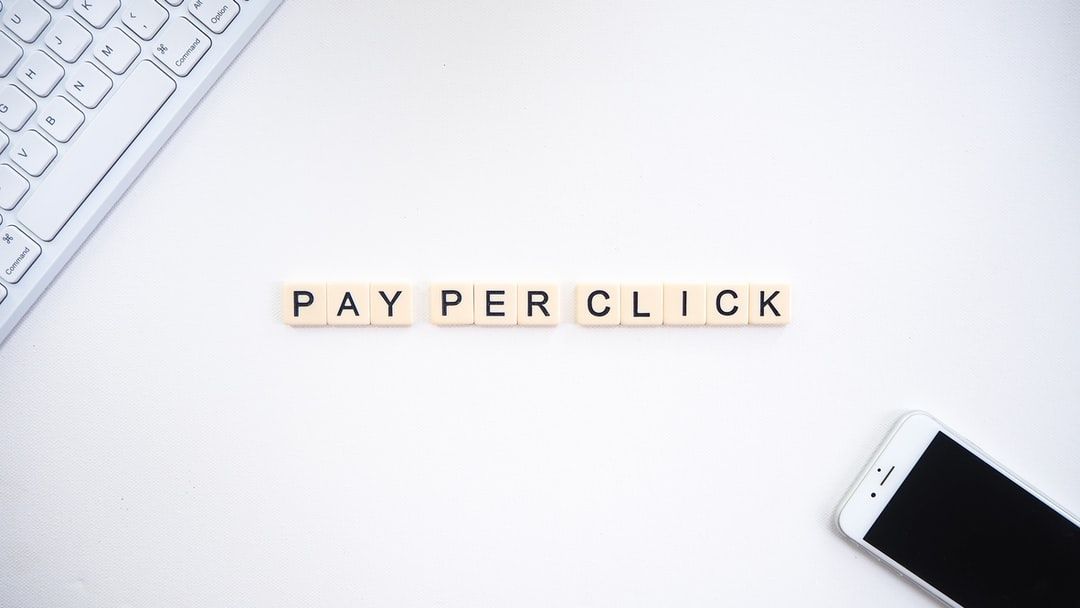The value of PPC advertising can be summed up in one word: reach. When you place your ad on a Google search engine results page (SERP), you’re standing on the shoulders of the world’s most popular search engine. In 2020, about 267 million different Americans used Google; that’s about 80% of everyone in the U.S. With all those potential eyeballs, it’s no wonder PPC advertising can be an effective method for building leads, promoting your business, and driving sales.
For these reasons, more businesses are looking to get started with PPC, but it's challenging to know where to start if you’re new to digital marketing. In this article, we’ll help you start promoting your business with PPC by giving an overview of:
- What is PPC
- How PPC differs from search engine optimization (SEO)
- How PPC works
- What you need to get started
No matter how big or small, businesses with an online presence should include PPC in their overall advertising strategy. With this overview of PPC advertising, you'll learn the basics needed to employ cost-effective and easily targeted ad campaigns that will drive traffic, build leads, and boost sales.
What is PPC?
PPC is a form of online advertising where advertisers place ads on websites, search engines, or marketplaces and pay a small fee whenever readers click on their ad. Because you only pay when people click, it can save your business from wasting ad money on the majority of people who’ll scroll past your ad.
The most popular and common form of PPC advertising is Google Search PPC. Google Search PPC allows you to place links on Google’s search engine results pages (SERPs).

Google Search ads work like this: when someone searches on Google, Google tries to place ads on the SERP it believes solves the search intent of that particular person. It does this by matching the user’s search query to keywords advertisers associate with their ads: this is called keyword matching.
Since there are a huge number of ways to search for a single intent (place to buy shoes, shoe store, shoe store near me, where to buy shoes), Google uses keyword matching to make life easier for advertisers.
On each ad, you include a list of keywords you want your ad to be associated with and instructions for how strict Google should be when matching, ranging from exact matches to broad matches. So, if you associate your ads with the keyword “Paris vacation,” depending on how strict your keyword match settings are, your ad could show up on SERPS like “Paris holiday,” “best Paris vacation ideas,” or even “best places to visit in France.”
Once it has collected all the ads with keywords that match the search query, Google holds an auction to determine which ads are shown. The winning ads are selected based on their bid amount, ad quality, and the impact their format might have on searchers.
The auction is over in a split second, so when the SERP loads, the searcher is confronted with targeted ads relevant to their search alongside regular organic results. For example, if they searched “best running shoes,” they might receive an ad from Adidas or Nike.
If the ads are enough to entice the searcher to click, then the website pays Google for that click. The average cost of a PPC ad or cost-per-click (CPC) is usually only a couple of dollars. However, it depends on your industry. For example, in 2020, the average CPC in the insurance industry was $18.57, but in electronics, it was only $.83.
You won’t know exactly how much you’ll pay in advance, but you do get an estimate of the price, and you can set limits on how much you’re willing to pay.
With the searcher now on your landing page after clicking your search ad, it’s up to you to convert them into a paying customer. If you convert enough customers, you’ll make up your PPC costs and turn a nice profit. This process repeats itself as long as you want it to, as Google Ads can be paused and resumed depending on when you need them.
How do Google Ad auctions and Ad Rank work?
Google Ad auctions aren’t really like traditional auctions. In most auctions, the highest bidder wins, but in Google Ads, the bid price is only one factor among many. As well, since auctions finish so quickly, bids aren’t made in real-time; instead, preset amounts or computer algorithms determine how much you’re willing to pay.
This is because Google needs to safeguard the trust searchers have in its ability to give them the results they actually want. If Google were to show searchers a bunch of irrelevant and annoying ads, it might cause searchers to ignore PPC ads by reflex or move to other search engines altogether.
For this reason, the ad auction works like this:
- Searchers input a search query (i.e., NYC top tourist attractions)
- Google collects all the ads advertisers have targeted at keywords related to the users’ search query; the keyword could be the same as the search query or match the general intent of the query using different words (i.e., things to do in New York)
- Google gives each ad an Ad Rank score
- The ads with the top Ad Rank scores get put on the SERP, with the highest ads getting the most preferential spots (i.e., the top of the SERP)
Because Ad Rank plays such a significant role in whether your ad gets shown and where it gets shown, it’s essential to get your Ad Rank as high as possible.
According to Google, Ad Rank is determined by six key factors:
- The amount you bid: This is not necessarily the amount you’ll pay (more on that in the next section on Actual CPC), but it represents how much you’re willing to pay for this ad. When it comes to bidding, you can personally set your maximum CPC bid amount, or you can let Google automatically bid for you, depending on your preferences.
- The quality of your ad and landing page: Google wants searchers to get a good experience, regardless of whether it's an organic result or a paid one. Better ads and landing pages will get a higher Ad Rank.
- The ad rank thresholds: Ad Rank thresholds represent “your ability to compete in an ad auction.” The thresholds you need to overcome may vary, but they’re based on things like your ad quality, who is searching, and the topic of the search.
- The auction competition: How similar in Ad Rank the different bidders are.
- The context of the search: To make the ad as targeted as possible, Google takes into account things like who the searcher is, where they are, and what they’ve searched for to help determine the particular Ad Rank of an ad in this auction.
- The impact of ad extensions and formats: If Google thinks additional information like phone numbers or directories will sway searchers, adding these to your ad will help increase your Ad Rank.
Most of these factors you won’t be able to influence, like the context of the search or your competition, but with others, the ball is entirely in your court.
For instance, making sure your PPC ad copy and landing page are as good as possible is one way to improve your Ad Rank. It can also help you save money by reducing the actual CPC you pay if someone clicks on your ad.
What is your actual CPC on ads?
The actual CPC is the amount you end up paying when someone clicks on your PPC ad. The amount you bid in the auction is not your actual CPC; instead, your bid is the highest amount you’re willing to pay for a click on that keyword.
Your actual CPC can often be much cheaper than your bid amount. This is because you’re only required to pay “what's minimally required to clear the Ad Rank thresholds and beat the Ad Rank of the competitor immediately below you.” So if your max CPC bid is $5.00, but you only need $3.50 to have the highest Ad Rank, your actual CPC will only be $3.50. If you aren't sure where to start with how much to bid on a keyword, you can use Google Keyword Planner to look at average CPC data per keyword or use Google's Bid Simulator to see how different bids might impact your number of clicks.
Since you’ll want to pay less for your ads, make sure you’re creating high-quality ads and landing pages so your Ad Rank is higher, and you’ll need the minimum amount of money to beat the competition when it comes time for the ad auctions.
Why would you choose PPC over SEO?
The truth is, you shouldn’t be picking SEO over PPC or vice versa; both are important tools in your digital marketing toolbox. Yes, SEO is free (minus the time and effort put into content creation), and it’s far more evergreen than PPC as you’ll continue to bring in readers as long as you rank, but that doesn’t mean PPC doesn’t have its uses.

PPC shines brightest when websites:
- Need quick results
- Want to target highly commercial keywords that can lead to more sales
- Make a priority of spreading brand awareness
PPC can complement your SEO strategies by giving you quick wins for competitive keywords your target market is searching for. SEO might be where you should focus most of your efforts, but PPC offers agility to your digital marketing strategy, letting you promote sales or new products without having to wait months for your SEO to catch up.
Google Ads also include a multitude of training opportunities, listed on YouTube by 3rd party experts and as support from Google itself. You don't have to take a course to start, as much of the steps are clear. Google suggests settings that help you ramp up quickly, and starting small lets you test and apply what you learned to bigger parts of your campaigns. However, there are advantages to growing your PPC proficiency. Should you want to venture down that route, you can take training courses to grow your skillset and your confidence. Again, that route is loaded with benefits but isn't required.
What you need before you start making PPC campaigns
If you want to advertise with PPC campaigns on Google, there are a couple of things you’ll need to prepare before you get started.
1. Goals
Before anything else, the first thing you need to do is decide on your PPC goals. If you don’t know what you want to get out of your PPC advertising, chances are you won't like the results.
Some common PPC goals are:
- Build brand awareness
- Promote a product or sale
- Boost site traffic
- Increase conversions
When choosing your goal(s), consider the current state of your website and what it needs. For instance, do you already convert well once people get to your site, but you’re struggling to draw in enough relevant traffic? Then, consider site traffic or brand awareness as your goals for PPC.
You should also consider how PPC will contribute to this goal. For example, if boosting traffic is your goal, then SEO might be the better long-term solution to your traffic problems, while PPC can be a way of kick-starting your efforts or acting as a stop-gap while your SEO really gets going.
By setting a goal now, you can focus the rest of your PPC creation process on accomplishing that goal. For instance, if your goal is to promote a seasonal sale, then you can build your budget, keyword list, ad copy, and landing pages around this promotion. That means a budget that will give you enough resources to properly promote, keywords targeted at holiday shoppers, and ad copy and landing pages designed with that holiday in mind.
2. Budget
PPC campaigns only work so long as you have a budget to pay for the clicks. Depending on your site and the amount of money you set aside for advertising, you may not be able to feasibly sustain months of ads that aren’t immediately showing an ROI.
For companies with smaller PPC budgets, more targeted goals might be a better option. For instance, if you were a sustainable hair care company, you could focus your PPC budget on keywords like “buy organic hair care products” or “where to buy eco-friendly hair care products.” These keywords might be more expensive (transactional keywords usually are), but they could also directly lead to conversions to justify your PPC budget.
Another idea is to focus your PPC budget on crucial times of the year. For example, if you sell decorations, you could only purchase PPC ads in the weeks leading up to holidays like Christmas, Halloween, or Easter.
3. PPC Keyword Research
With a goal and budget in mind, the next step is to do some keyword research. When you create PPC ads on Google, you’ll be asked for a list of keywords relevant to your ads so Google can place your ads on search queries with search intents that match your keywords.
Using a Keyword Research Tool like SpyFu’s, you can look up keywords, find related keywords, and get an estimate of the traffic numbers and the potential CPC of that keyword.
Ideally, you want to find keywords that bring in the most possible relevant searchers at a reasonable CPC. Although overall volume numbers are important, they’re only useful as long as those searchers are all part of your target market. So, if you’re promoting your Christmas shoe sale, you might want keywords like “after Christmas shoe sale,” “shoe sale,” or “Christmas running shoes” to draw in people who are actually interested in buying shoes during the Christmas season.

If you spend as little as 20 minutes poking around, searching keywords, and checking out their stats, you’ll quickly be able to put together a list of potential keywords to target later on. Also, note each keyword’s volume and CPC so you can easily refer back later when you’re deciding on which keywords to use with your ads.
Keyword research can be as much an art as a science, and it takes some work to get good at it. If you want to learn more, look at our beginner guides to keyword research and finding profitable keywords for your business niche.
4. PPC Competitor Analysis
If you’re looking for a bit of a shortcut to an excellent PPC strategy, then look no further than your direct competitors. You probably aren’t the only ones doing PPC ads, and by spying on their strategy, you can learn a lot and beat them at their own game.
SpyFu’s PPC Keywords Tool lets you see an overview of all the PPC ads your competitors are buying, including the keywords and ad copies they're using.

For example, if you’re a clothing brand competing with Nike, it might come as a surprise that they’re buying ads on the keyword “baby boy clothes.” Maybe you hadn't considered that keyword to be valuable, but if Nike thinks it’s worth it, then perhaps it’s something you should check out as well.
5. Ad Copy and Landing Pages
For each Google Search PPC ad campaign you create, you’re going to need some ad copy to entice searchers and a landing page to convert them.
The goal of your PPC ad copy is to get people clicking through to your page. If you can convince them to click, half the work is already done. For this reason, PPC ad copy should:
- Stand out and be attractive to readers
- Showcase that your landing page will solve their query or reason for searching in the first place
- Be well written and free of errors
Learning to write great copy will take time. After your ads go live, you can start following how often searchers click through to your website, also called your click-through rate (CTR). See what works for your searchers and hone your copy to maximize your CTR. You can learn more with these tips to writing great PPC ad copy.
The second part you’ll need to get set up is your landing pages. Landing pages are the page on your website searchers will go to after clicking on your PPC ad. The goal of a landing page is to reward your searcher for clicking through by giving them what they want, whether that’s information, a product, or a service you’re offering.
Depending on your site and the goals of your PPC campaign, you may already have a functional landing page you can link to, like a sign-up page, free trial page, or product page. The important thing is your landing page matches the expectations your ad copy sets. For example, if you promise “a list of the best shoes of 2021” and send them to a product page with just your shoe, readers might feel ripped off and bounce from your site. Not only does this waste the money you spent when they clicked on your ad, but it also signals Google that searchers don’t like your ad and landing page, and that can negatively affect your Ad Rank.
6. Google Ads Account
Finally, set up a Google Ads account, and you’ll be ready to create your first PPC ad campaign. The process is fairly simple, only requiring an email address and the URL of your website. If you run into any issues, you can look at Google’s Ad Account sign-up FAQ.
Once your account is created, click on “+ New Campaign” on the main dashboard and follow the prompts. Google will ask you a series of questions like what is the purpose of your campaign (your goal), how much is your daily spend (your budget), what keywords you want to target, and which ad copies you’d like to use. If you’ve followed everything up to this point, you should be able to get a basic campaign off the ground.
If you have any questions about the campaign setup process, you can follow Google’s step-by-step guide. It can provide some extra context for concepts like location targeting and dynamic search ads. However, the best way to learn PPC is to do it; starting with a small campaign and a modest goal, you can learn the ropes and get a feel for why PPC is such an effective tool for digital marketing.
Get started running successful PPC campaigns
There’s a lot more to PPC advertising than what we’ve discussed in this introduction to PPC. If you want to maximize your ROAS and really see the potential benefits of PPC marketing, you’re going to have to learn how to optimize and manage your PPC ad campaigns like a pro. To learn how you can do this, read our guide to PPC campaign management to see tips we’ve learned to help websites create the best possible ad campaigns for their businesses.

